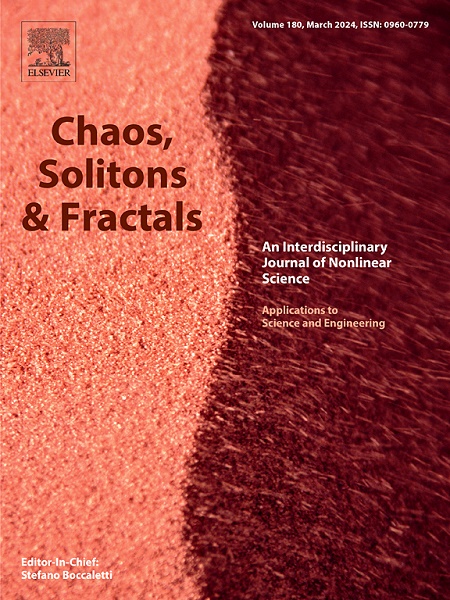快速兴奋调节矛盾地减少网络和单个神经元的峰值活动与自爆:复杂分叉和不稳定极限环
IF 5.3
1区 数学
Q1 MATHEMATICS, INTERDISCIPLINARY APPLICATIONS
引用次数: 0
摘要
兴奋性调节有时会降低神经元活动的矛盾现象引起了越来越多的关注。本文围绕霍奇金-赫胥利(HH)模型的亚临界Hopf分岔,研究了快速兴奋调节引起的活性降低及其机制。在具有不同拓扑结构的网络中,具有强同步性的两种活动减少情况,包括表现为混合模式振荡的尖峰湮灭和尖峰延迟,分别发生在具有快速衰减的兴奋性突触的弱电导和强电导上,而具有缓慢衰减的兴奋性突触则出现两种活动增强情况。由于强同步性,网络动态可以用单个HH神经元通过兴奋性自爆调节来再现和解释。在自适应电导和衰减率参数平面上,导出了区分不同的减弱和增强活度的6条分岔曲线。进一步得到了活性降低后电位与分离稳定尖峰和静息状态的不稳定极限环之间的关系。当弱和强兴奋调制诱导后电位穿过不稳定极限环定位于稳定静息状态并在稳定静息状态周围振荡时,分别出现峰灭和峰延迟。这些复杂的动态为理解神经系统兴奋性调节的矛盾功能提供了见解。本文章由计算机程序翻译,如有差异,请以英文原文为准。
Fast excitatory modulations paradoxically reduce spiking activity in the network and single neuron with autapse: complex bifurcations and unstable limit cycles
The paradoxical phenomenon that excitatory modulations sometimes reduce neuronal activity has attracted increasing attention. In this paper, reduced activity induced by fast excitatory modulations and the corresponding mechanisms are investigated around the subcritical Hopf bifurcation of the Hodgkin–Huxley (HH) model. In networks with different topologies, two cases of reduced activity with strong synchronization, including spiking annihilation and spiking delay that behaves as mixed-mode oscillations, occur respectively at weak and strong conductances of excitatory synapses with fast decay, whereas two cases of enhanced activity appear for excitatory synapses with slow decay. Due to the strong synchronization, the network dynamics can be reproduced and explained using a single HH neuron modulated by an excitatory autapse. Six bifurcation curves that separate different reduced and enhanced activities are derived in the parameter plane of autaptic conductance and decay rate. Furthermore, the relationship between the afterpotential of reduced activity and the unstable limit cycle separating the stable spiking and resting state is obtained. As the excitatory modulations with weak and strong strength induce the afterpotential to run across the unstable limit cycle to locate at and oscillate around the stable resting state, spiking annihilation and spiking delay appear, respectively. These complex dynamics provide insights for understanding paradoxical functions of excitatory modulations in the nervous system.
求助全文
通过发布文献求助,成功后即可免费获取论文全文。
去求助
来源期刊

Chaos Solitons & Fractals
物理-数学跨学科应用
CiteScore
13.20
自引率
10.30%
发文量
1087
审稿时长
9 months
期刊介绍:
Chaos, Solitons & Fractals strives to establish itself as a premier journal in the interdisciplinary realm of Nonlinear Science, Non-equilibrium, and Complex Phenomena. It welcomes submissions covering a broad spectrum of topics within this field, including dynamics, non-equilibrium processes in physics, chemistry, and geophysics, complex matter and networks, mathematical models, computational biology, applications to quantum and mesoscopic phenomena, fluctuations and random processes, self-organization, and social phenomena.
 求助内容:
求助内容: 应助结果提醒方式:
应助结果提醒方式:


